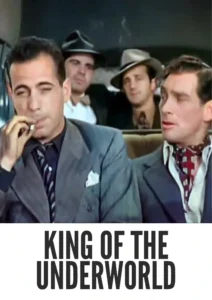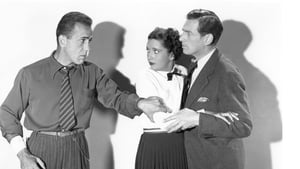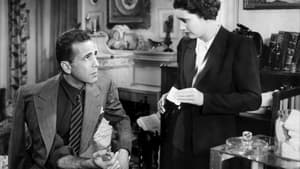Contact: [email protected]
Video Sources 0 Views
- Watch trailer
- King of the Underworld


Synopsis
Table of Contents
ToggleReview: King of the Underworld (1939) – A Gritty Crime Drama Immersed in Intrigue

Introduction
“King of the Underworld” (1939) emerges from the shadows of Hollywood’s Golden Age as a gripping crime drama that delves into the murky depths of the criminal underworld. In this review, we’ll explore the significance of this classic film, examining its impact on audiences and its enduring legacy in the realm of crime cinema.
Check The Full Colorized Movies List
Check Our Colorized Movies Trailer Channel
Understanding King of the Underworld 1939: Director, Cast, and Genre
Directed by Lewis Seiler, “King of the Underworld” (1939) showcases his knack for crafting compelling narratives that resonate with audiences. The film boasts a talented ensemble cast, led by Humphrey Bogart in a standout performance that solidifies his status as a Hollywood icon. Blending elements of crime, drama, and noir, “King of the Underworld” (1939) plunges viewers into a world of intrigue and deception, where the line between right and wrong blurs in the shadows of the night.
Exploring the World of King of the Underworld 1939: Plot and Characters
At its core, “King of the Underworld” (1939) follows the exploits of a ruthless gangster, portrayed by Humphrey Bogart, who rises to power in the criminal underworld through a combination of cunning and ruthlessness. As he navigates a treacherous web of alliances and betrayals, he finds himself drawn to a troubled young woman, played by Kay Francis, whose innocence challenges his jaded worldview. Together, they embark on a dangerous journey that will test their loyalties and ultimately determine their fates.
The Art of Film Noir
“King of the Underworld” (1939) exemplifies the classic elements of film noir, with its shadowy cinematography, morally ambiguous characters, and gritty urban settings. From its atmospheric lighting to its haunting score, the film immerses viewers in a world of crime and corruption, where danger lurks around every corner and redemption seems like a distant dream.
Early Crime Films: A Brief History
The history of crime cinema dates back to the early days of silent film, with filmmakers exploring themes of lawlessness and justice in gritty urban settings. From gangster epics to film noir classics, the genre has evolved over the decades, reflecting the changing social and political landscape of the times. “King of the Underworld” (1939) stands as a testament to the enduring popularity of crime cinema, captivating audiences with its thrilling narrative and unforgettable characters.
King of the Underworld 1939 and Its Impact on Crime Cinema
The release of “King of the Underworld” (1939) marked a significant milestone in the evolution of crime cinema, introducing audiences to a new breed of anti-hero whose exploits captured the imagination of viewers around the world. Humphrey Bogart’s portrayal of a morally ambiguous gangster resonated with audiences, paving the way for a new era of crime films that explored the darker side of human nature.
The Debate Over Crime Cinema
The debate over crime cinema continues to rage, with critics and audiences alike grappling with the moral implications of glorifying violence and criminal behavior on screen. While some argue that crime films offer valuable insights into the human condition and the complexities of morality, others contend that they glamorize antisocial behavior and desensitize viewers to the consequences of violence. As the debate unfolds, filmmakers and audiences are left to ponder the ethical implications of their cinematic choices.
Examining King of the Underworld 1939 as a Crime Drama
As with any classic crime drama, the impact of “King of the Underworld” (1939) is a matter of personal interpretation. Some may view it as a cautionary tale of the perils of unchecked ambition and moral compromise, while others may see it as a thrilling exploration of the criminal psyche and the allure of forbidden desires. Regardless of one’s interpretation, there’s no denying the enduring power of “King of the Underworld” (1939) as a timeless classic that continues to captivate audiences with its gripping narrative and unforgettable characters.
Influence and Legacy: King of the Underworld 1939’s Impact on Crime Cinema
“King of the Underworld” (1939) has left an indelible mark on the world of crime cinema, inspiring countless filmmakers and captivating audiences with its timeless tale of power, greed, and redemption. From its unforgettable performances to its haunting visuals, the film continues to resonate with viewers of all ages, reaffirming its status as a beloved classic of the genre.
Director’s Cinematic Legacy: Beyond King of the Underworld 1939
Lewis Seiler’s influence extends far beyond “King of the Underworld” (1939), with a diverse body of work that spans multiple genres and styles. From crime dramas to musicals, Seiler’s films are celebrated for their craftsmanship and storytelling prowess, solidifying his legacy as one of Hollywood’s most versatile directors. Through his groundbreaking work, Seiler has left an indelible imprint on the world of cinema, inspiring generations of filmmakers to follow in his footsteps.
Themes Explored in King of the Underworld 1939
“King of the Underworld” (1939) explores a myriad of themes, from the corrupting influence of power to the search for redemption in a world consumed by greed and ambition. Through its richly drawn characters and morally complex narrative, the film invites viewers to ponder the nature of good and evil and the choices that define our lives. As audiences immerse themselves in the world of “King of the Underworld” (1939), they are reminded of the timeless truths that bind us together as human beings and the enduring power of cinema to illuminate the darkest corners of the human soul.
Reception and Controversy Surrounding King of the Underworld 1939
Upon its release, “King of the Underworld” (1939) received widespread critical acclaim, with many praising its gritty realism, taut direction, and standout performances. However, the film’s unflinching portrayal of violence and criminal behavior sparked controversy among some viewers, reigniting the age-old debate surrounding the ethics of representation in cinema. Despite the controversy, “King of the Underworld” (1939) remains a beloved classic that continues to resonate with audiences of all ages, reaffirming its status as a timeless masterpiece of the crime drama genre.
Where to Watch King of the Underworld 1939 Online
For those eager to experience the gripping drama of “King of the Underworld” (1939), the film is readily available on popular streaming platforms such as Netflix, Amazon Prime, and Hulu. Whether you choose to watch it in its original black and white format or the early colored version, “King of the Underworld” (1939) promises to transport you to a world of intrigue and deception, where the line between right and wrong blurs in the shadows of the night.
FAQs About King of the Underworld 1939
Q: Is “King of the Underworld” (1939) based on a true story? A: No, “King of the Underworld” (1939) is a fictional tale crafted by screenwriter Robert Rossen, who drew inspiration from real-life events and characters to create a gripping narrative that captivates audiences from start to finish.
Q: Who are the main actors in “King of the Underworld” (1939)? A: “King of the Underworld” (1939) features a talented ensemble cast, led by the legendary Humphrey Bogart in a standout performance that solidifies his status as one of Hollywood’s most iconic actors.
Q: What awards did “King of the Underworld” (1939) win? A: While “King of the Underworld” (1939) did not win any major awards, it received critical acclaim for its gripping narrative, taut direction, and standout performances, cementing its status as a beloved classic of the crime drama genre.
Q: Why was “King of the Underworld” (1939) released in a colorized format? A: The decision to release “King of the Underworld” (1939) in color was made to introduce the film to a new generation of viewers and enhance its visual appeal for modern audiences. While the choice to colorize the film sparked debate among purists, it ultimately allowed “King of the Underworld” (1939) to reach a wider audience and ensure its continued relevance in the annals of cinematic history.
Conclusion
As we reflect on the enduring legacy of “King of the Underworld” (1939), let us celebrate its status as a timeless classic that continues to captivate audiences with its gripping narrative, unforgettable characters, and haunting visuals. Whether viewed in its original black and white format or the early colored version, “King of the Underworld” (1939) remains a shining example of the power of cinema to transport us to another time and place, inviting us to explore the darkest corners of the human psyche and the enduring allure of the criminal underworld.










